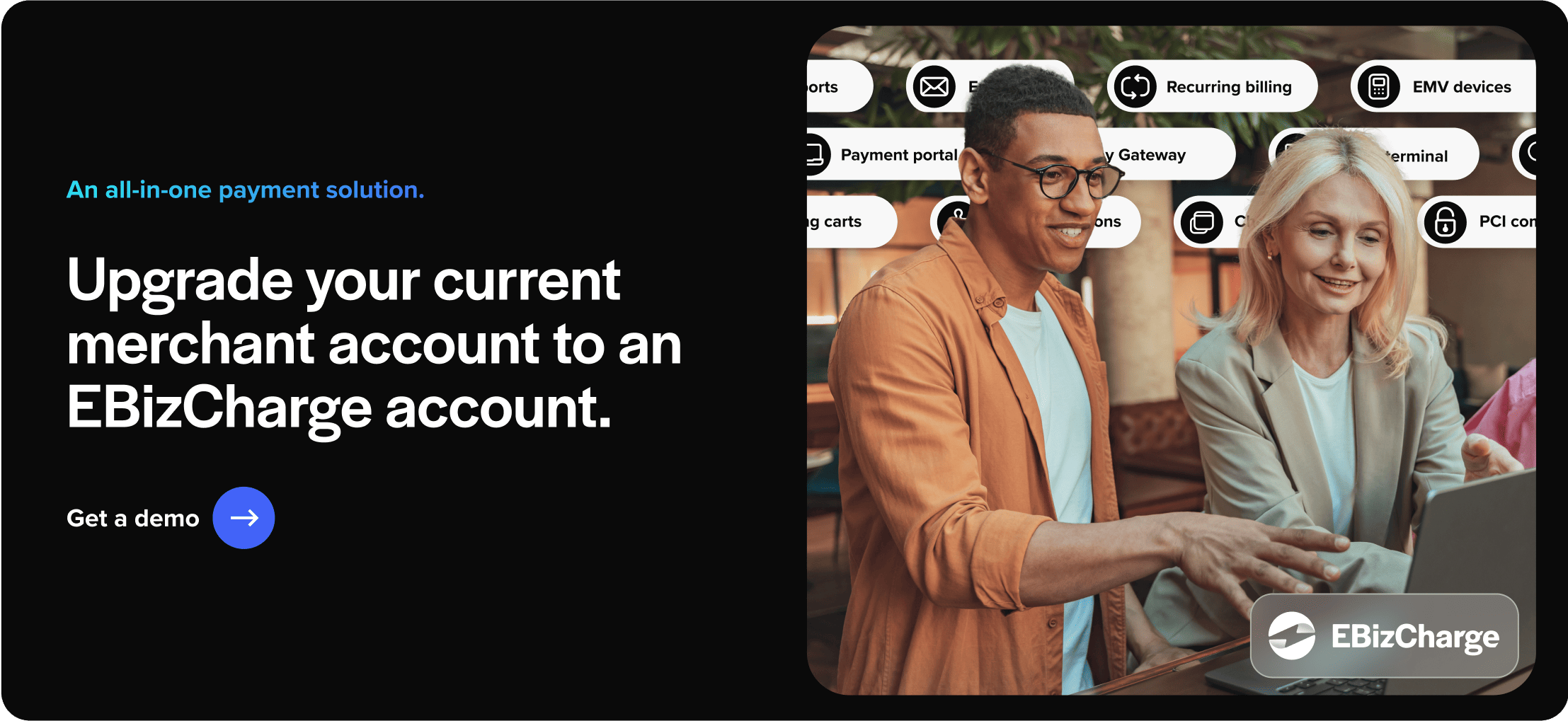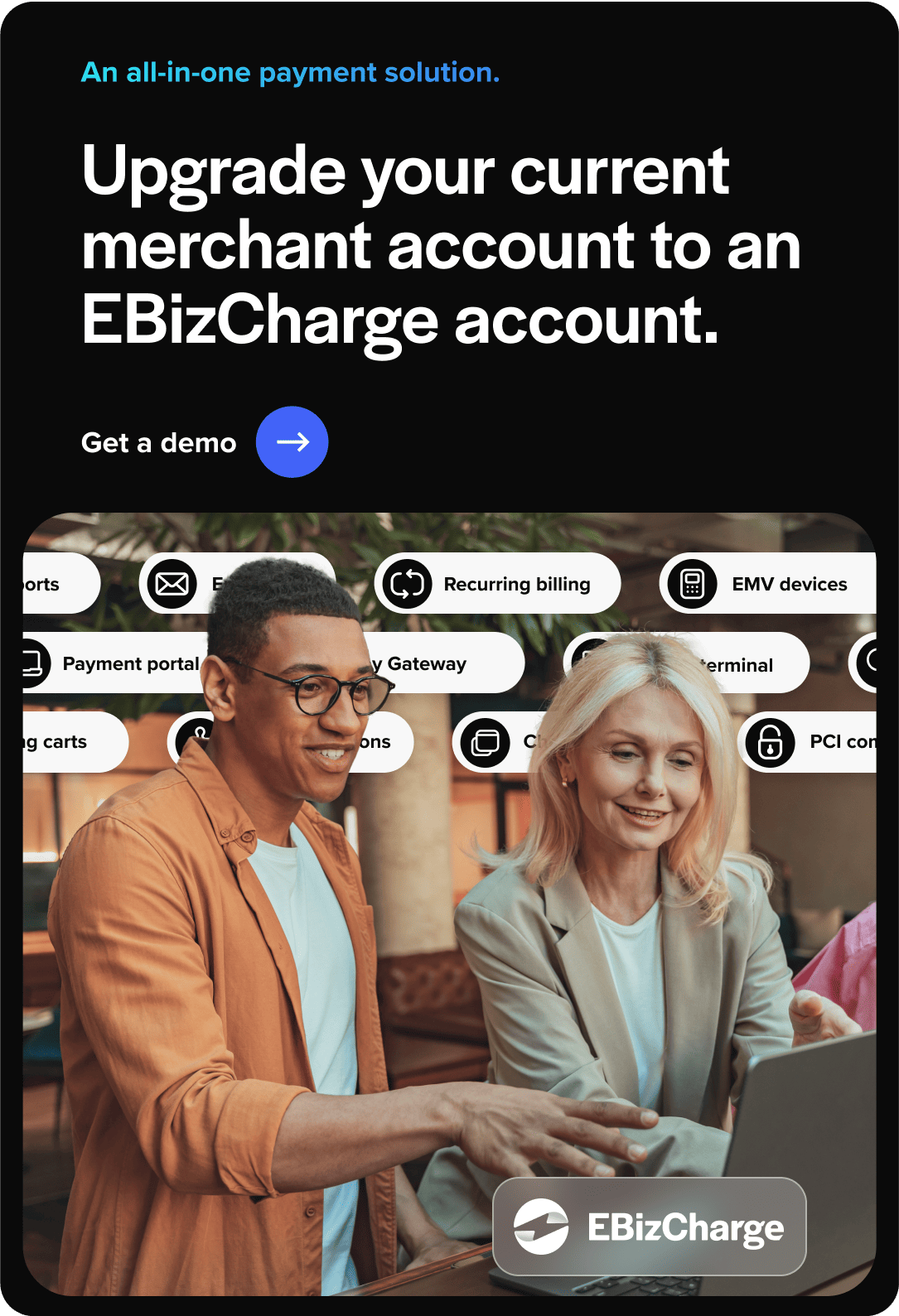Blog > How to Open a Merchant Account: 7 Steps to Start Accepting Credit Card Payments
How to Open a Merchant Account: 7 Steps to Start Accepting Credit Card Payments
If you’re looking to start accepting credit card payments from your customers, then you’ll need to open a merchant account. While the process of setting up a merchant account may feel overwhelming at first, it’s essential to a great business. Here are seven steps on how to get a merchant account.
How to open a merchant account
- Get a business license
- Open a business bank account
- Evaluate your needs
- Compare providers
- Complete an application
- Submit to underwriting
- Get approved and start processing
Get a business license
To open a merchant account, you’ll have to prove your business is legitimate. The very first step to setting up a merchant account is to get a valid business license.
Open a business bank account
Once you have a business license, you’ll need a business bank account. This bank account is where your merchant account provider will deposit your credit card sales and withdraw any fees. Most businesses prefer to open a business bank account with a local bank, as local banks tend to provide a level of convenience and customer service that can’t be matched by online accounts. To get started with a business bank account, you’ll need to provide your EIN (employer identification number) and your business license.
Evaluate your needs
Before you can open a merchant account, think about your business needs. For example, you’ll need to decide which credit cards you want to process. Will you accept American Express, or just Mastercard and Visa? What about ACH or eChecks?
Next, you’ll need to consider how you want to accept credit card payments. Do you simply need an in-person solution for processing payments in your brick-and-mortar store? Or do you need a solution that supports mobile payments and online payments? How will your customers pay you—will you provide a customer payment portal where customers can pay off invoices?
Map out exactly what your business will need, including both the short-term and the long-term. If you’re planning on expanding in the next few years and anticipate additional payment needs in the future, be sure to include them in your planning.
Compare providers
Now that you have an idea of what your business needs, you can take that information and start assessing merchant account providers for the best fit.
The video below will explain what to look for when finding a merchant services provider.
Here are a few more key features to look for when opening a merchant account:
PCI compliance and strong security
Merchants have a responsibility to protect their customers’ credit card information, and that responsibility can sometimes feel like a burden. But you can release some of that stress by choosing a PCI compliant merchant account provider that offers strong security features. Knowing your merchant account provider is actively protecting your customers’ vulnerable data will lift off some of the pressure and give you peace of mind.
Free in-house support
If something goes wrong with your credit card processing, it’s no joke—that’s your profit at stake. Look to open a merchant account with a provider that supports you with 24/7, in-house customer service free of charge.
Next-day funding
Some merchant account providers offer next-day funding options, so you get money in your account faster.
Transparent pricing models
Credit card processing fees are confusing, especially for merchants new to the scene. If your merchant account provider is unclear or anything less than completely transparent, it might be a sign to reconsider. Research credit card pricing models to see which model is right for your business, then choose a provider that offers your preferred method. Two of the most popular and cost-effective pricing models are flat rate and interchange plus.
The podcast episode below goes into each pricing model in detail:
Scalability
Keep the future in mind when opening a merchant account. Your business may be small or based in brick-and-mortar now, but if you have plans to expand or venture online, you’ll need a merchant account provider that can scale with your growing processing volume and changing needs.
No contracts
Ensure your merchant account provider doesn’t require a contract or choose one that offers month-to-month contracts. The last thing you want is to get locked into a long contract with a provider that turns out to be a bad fit.
No unnecessary fees
Finally, research any fees that will be included in your merchant account service. Some fees are unnecessary and only hurt the merchant. Ask for a detailed list of all included fees, and look out for customer service fees, batch fees, annual fees, and monthly minimum fees.
A single provider for credit card processing
Some merchants choose a merchant account provider that’s separate from their credit card processor. However, splitting these services between two different providers is a missed opportunity. It’s more efficient, convenient, and cost-effective for merchants to choose a merchant account provider that also offers credit card processing.
If your credit card processor also opens your merchant account, you’ll experience several benefits:
- You won’t have to open two separate accounts for credit card processing and ACH processing
- Reduces the number of people you have to deal with and gives you a single point of contact for all your credit card processing
- Underwriting typically happens in-house (and you only have to do it once)
- Access to additional services like chargeback management, payment gateway, integrated payment applications, and eCommerce integrations
Complete an application to open your merchant account
Once you’ve compared merchant account providers and made a choice, you’ll need to fill out an application. This application will require detailed information about your business, so be prepared with all necessary documentation. You’ll most likely need to provide:
- Business start date
- Contact information
- Authorized signer information (the person who is authorized to withdraw or spend money from the account)
- Bank account and routing numbers
- Tax ID
- Estimated processing volume in dollars
Depending on the amount of volume you expect to process, you’ll need to provide more or less information. For example, a small business that expects to process several thousand dollars a month may only need to provide a voided check and proof that they’re currently conducting legitimate business. In contrast, a larger business may need to provide bank statements going back several years.
Submit to underwriting
Taking on a merchant account is a risk for both the account provider and the acquiring bank. The provider will, therefore, underwrite and assess your business before accepting you. They’re looking for red flags like high-risk businesses or industries, warning signs of fraud, or businesses that haven’t been operating for very long. If your business is established and has proven good standing for at least a few months to a year, you should make it through the underwriting process without any problems. However, new businesses may struggle to make it past the underwriting stage, as account providers and banks are less likely to accept the risk of a new business.
Not sure what underwriting is? Check out this podcast episode below to learn more about it:
Get your merchant account approved and start processing
Depending on the provider, opening a merchant account can take anywhere from one business day to about a week. Once your business is approved, you can start accepting credit card payments from your customers right away.
 Get a free cost-comparison of your current payment processing costs vs. EBizCharge
Get a free cost-comparison of your current payment processing costs vs. EBizCharge 

